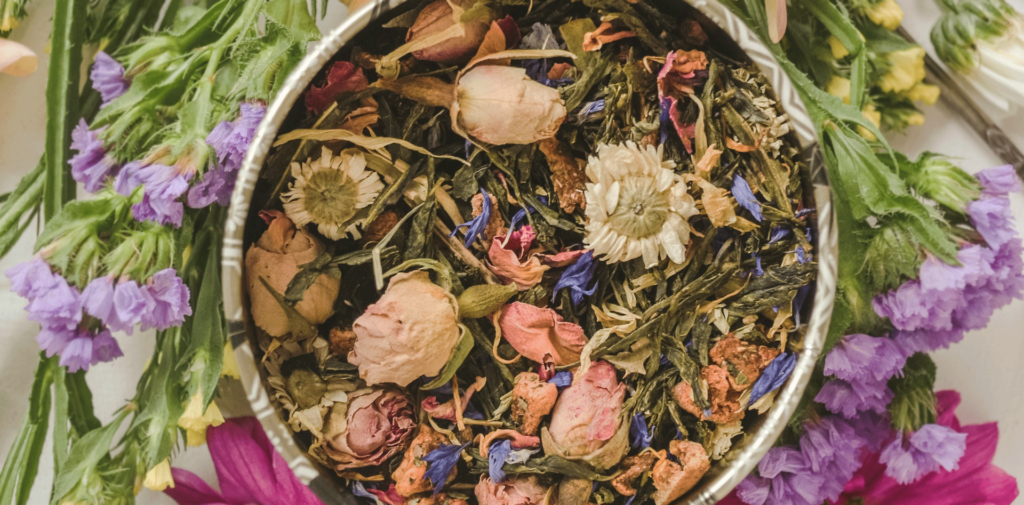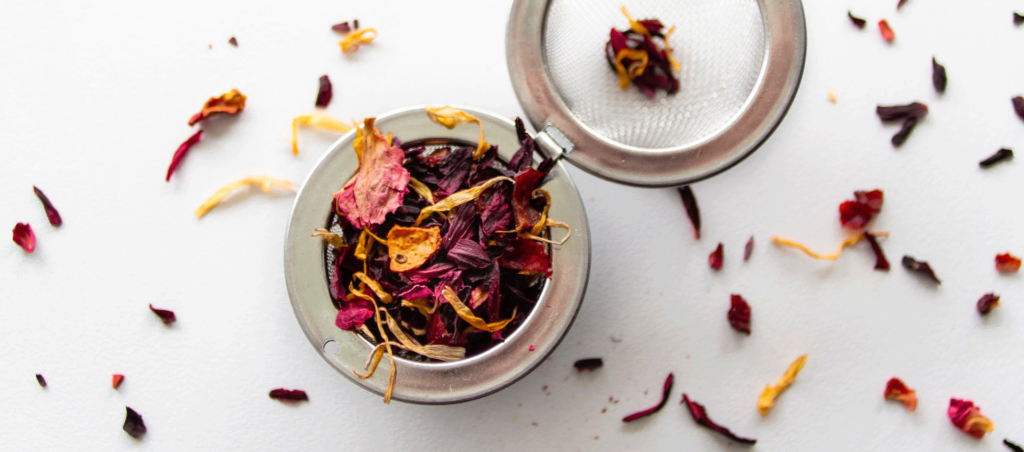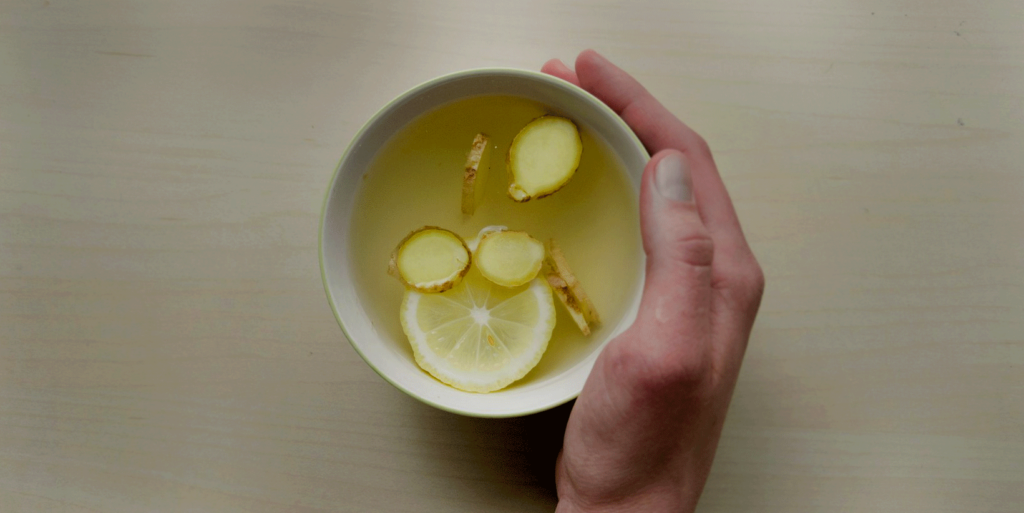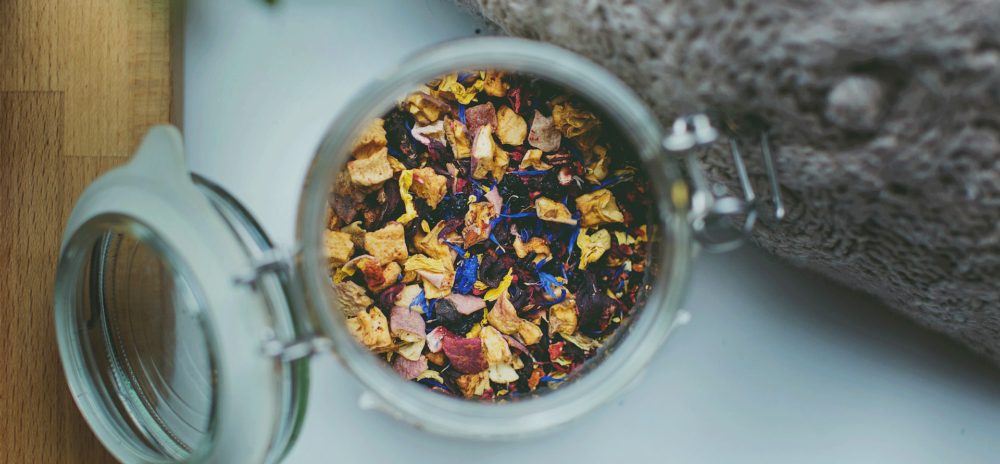Table of Contents
Introduction
A symphony of flavors, a burst of natural sweetness – welcome to the vibrant world of fruit tea. In this exploration, we’ll delve into the enchanting realms of Fruit Tea, a beverage that seamlessly combines the goodness of tea with the lusciousness of fruits.
Fruit tea, in its essence, is a delightful infusion that marries the diverse aromas and tastes of tea leaves with the juicy, succulent notes of various fruits. Unlike traditional teas, fruit tea is a versatile concoction, embracing a spectrum of colors and flavors derived from nature’s orchards. Whether served hot or cold, this beverage captivates tea enthusiasts and fruit lovers alike with its refreshing and invigorating profile.
The roots of fruit tea trace back through time, intertwining with the rich tapestry of tea culture worldwide. From ancient traditions to modern innovations, the evolution of fruit tea has been shaped by cultural exchanges, regional influences, and a quest for diverse sensory experiences. Join us on a journey through the annals of history as we uncover the origins and transformations that have led to the fruity symphonies in your teacup today.
What Exactly is Fruit Tea?
Fruit tea, also known as herbal tea or tisane, is a beverage made by infusing fruits, herbs, flowers, or other plant-based ingredients in hot water. Unlike traditional tea, which comes from the Camellia sinensis plant, fruit tea is caffeine-free and derives its flavors and aromas from a diverse range of botanicals. The ingredients used in fruit tea can include dried or fresh fruits, herbs, spices, flowers, and sometimes even leaves or stems.
The term “fruit tea” is somewhat broad and encompasses a wide variety of blends, each offering a unique taste and aromatic profile. Some popular examples of fruit teas include:
- Berry Blends: Combining various berries such as strawberries, raspberries, blueberries, and blackberries to create a fruity and often tart infusion.
- Citrus Infusions: Utilizing citrus fruits like oranges, lemons, limes, and grapefruits to add zesty and refreshing notes to the tea.
- Tropical Fruit Mixes: Blending tropical fruits like pineapple, mango, and passion fruit for a taste of the exotic.
- Herbal Medleys: Incorporating a mix of herbs such as mint, chamomile, or lemongrass for a soothing and aromatic experience.
- Floral Teas: Including flowers like hibiscus, chamomile, or rose petals to introduce floral undertones to the infusion.
Fruit teas are often enjoyed for their natural sweetness, vibrant colors, and the absence of caffeine, making them a popular choice for those seeking a caffeine-free alternative to traditional tea. The variety of ingredients allows for endless creativity in crafting unique and flavorful fruit tea blends.
Origins and Growing Regions
Overview of Fruit Tea Origins
The roots of fruit tea stretch across diverse landscapes, each contributing its unique essence to the vibrant world of tea. Exploring the origins of fruit tea unveils a tapestry woven from the rich histories of regions worldwide.
Fruit tea, often known as tisane, traces its origins to ancient cultures that reveled in the abundance of nature’s bounty. The practice of infusing hot water with various fruits, herbs, and botanicals predates traditional tea, showcasing a timeless and global affinity for flavored beverages.
Key Growing Regions for Popular Ingredients
- Apples (Europe):
- Europe stands as a cradle of apple cultivation, and its apples are synonymous with orchard-fresh sweetness. Countries like France and Germany contribute to the fruit tea landscape with blends featuring the crisp and succulent notes of European apples.
- Berries (North America):
- The lush landscapes of North America, particularly the United States and Canada, are home to a plethora of berries. Blueberries, strawberries, raspberries, and blackberries flourish in these regions, finding their way into delightful berry fruit teas.
- Citrus Fruits (Asia, Mediterranean):
- Citrus fruits, with their zesty allure, hail from regions like Asia and the Mediterranean. Oranges, lemons, limes, and grapefruits thrive in the sunny orchards of countries such as Spain, Italy, China, and Japan, infusing teas with their invigorating and tangy profiles.
- Hibiscus (Africa, Middle East):
- Hibiscus, a star in floral fruit infusions, finds its origins in Africa and the Middle East. The vibrant hibiscus flowers bloom abundantly in regions with warm climates, contributing their distinct tartness and deep red hue to teas enjoyed around the world.
As the popularity of fruit tea transcends borders, the sourcing of quality ingredients has become a global endeavor. Tea enthusiasts can embark on a sensory journey, sipping teas that reflect the terroir of their origin, whether it be the crispness of European apples, the sweetness of North American berries, the citrusy zest from Asian orchards, or the floral tang of hibiscus from African and Middle Eastern landscapes. Each cup encapsulates the spirit and flavors of its specific growing region, creating a delightful tapestry of global tea culture.
Types of Fruit Tea

Embarking on a tantalizing journey through the world of fruit tea unveils a kaleidoscope of flavors and combinations, each more delightful than the last. Here’s a glimpse into the diverse types of fruit tea that grace teacups around the globe:
- Herbal Fruit Infusions:
- Comprising an array of herbs and fruits, herbal fruit infusions are caffeine-free blends. Chamomile, hibiscus, rosehip, and a medley of fruits create soothing and aromatic brews.
- Berry Bliss:
- Bursting with the natural sweetness of berries like strawberries, blueberries, raspberries, and blackberries, berry fruit teas offer a vibrant and antioxidant-rich experience.
- Citrus Symphony:
- Citrus-infused teas bring a zesty twist to the table. Lemon, orange, grapefruit, and lime add a refreshing acidity that complements the robustness of tea leaves.
- Tropical Temptations:
- Transport yourself to exotic locales with tropical fruit teas. Pineapple, mango, passion fruit, and coconut create a tropical paradise in your teacup.
- Orchard Elegance:
- Apple, pear, peach, and plum are stars in orchard-inspired fruit teas. These blends capture the essence of ripe orchard fruits, balancing sweetness with a hint of tartness.
- Spiced Fruit Infusions:
- Elevate your tea experience with spiced fruit infusions. Cinnamon, cloves, and nutmeg join forces with fruits, creating a warming and aromatic cup.
- Floral Fruit Fusions:
- Harmonizing the delicate notes of flowers with fruits, floral fruit fusions offer a refined and fragrant drinking experience. Rose, lavender, and chamomile add a touch of elegance.
- Minty Refreshers:
- Infused with the invigorating essence of mint leaves, minty fruit teas provide a revitalizing and cooling sensation. Mint pairs seamlessly with fruits like watermelon and berries.
- Exotic Melanges:
- Unleash your taste buds with exotic blends that defy categorization. Dragon fruit, lychee, guava, and other unique fruits contribute to these captivating and unconventional fruit teas.
- Custom Blends:
- The world of fruit tea encourages experimentation. Create your custom blends by combining your favorite fruits, herbs, and teas for a personalized sipping experience.
Each type of fruit tea invites you to savor the essence of nature’s bounty in a cup, promising a delightful journey for your palate.
Harvesting and Processing
General Fruit Tea Production Methods
Fruit tea, also known as herbal tea or tisane, involves a careful process of harvesting and processing various plant-based ingredients to create flavorful infusions. Here’s an overview of the general methods used in the production of fruit tea:
- Harvesting:
- Timing: The timing of harvest is crucial to ensure the fruits, herbs, or flowers are at their peak flavor and aroma. For many fruits, this is often when they are fully ripened.
- Manual or Mechanical Harvesting: Depending on the scale of production, fruits can be handpicked or harvested using machinery.
- Preparation:
- Cleaning: The harvested ingredients undergo thorough cleaning to remove any impurities, dirt, or debris.
- Sorting: Sorting is done to separate ripe, high-quality components from any damaged or underripe ones.
- Processing:
- Drying: One of the most common methods involves drying the ingredients. This can be done through air drying, sun drying, or mechanical drying. Proper drying helps preserve the flavors and aromas.
- Freezing: Some fruits are frozen to preserve their freshness. This method is common for berries and tropical fruits.
- Dehydration: Fruits and herbs can be dehydrated to remove moisture, preserving them for an extended shelf life.
- Blending:
- Creation of Blends: After individual ingredients are processed, they are skillfully blended to achieve a balanced and flavorful combination. Blending is an art that allows tea producers to create unique and appealing profiles.
Drying and Flavor Preservation Techniques
- Air Drying:
- Traditional Method: Some fruits and herbs are naturally air-dried by laying them out in a well-ventilated area. This method is slower but helps retain delicate flavors.
- Mechanical Drying:
- Oven Drying: In commercial production, ovens or drying machines are often used to expedite the drying process while maintaining control over temperature and humidity.
- Freeze Drying:
- Preserving Freshness: Freezing is a technique that helps lock in the freshness of fruits. Freeze-dried fruits are often used in fruit tea blends for their intense flavors.
- Dehydration:
- Removal of Moisture: Dehydrating fruits involves removing moisture to prevent spoilage. This method enhances shelf life and concentrates flavors.
- Flavor Preservation:
- Sealing and Packaging: After processing, fruit tea blends are carefully sealed and packaged to protect them from exposure to air, light, and moisture, ensuring the preservation of their flavors and aromas.
Understanding the intricacies of harvesting and processing is crucial for tea producers to create high-quality and flavorful fruit tea blends that delight tea enthusiasts around the world.
Brewing Techniques for Fruit Tea

General Guidelines for Preparing Fruit Tea
Brewing fruit tea is a delightful process that allows you to extract the vibrant flavors of fruits and herbs. Follow these general guidelines for a flavorful cup:
- Water Temperature:
- Use fresh, cold water.
- For herbal infusions, bring the water to a rolling boil.
- For delicate fruit teas, such as those with green tea or white tea bases, use slightly cooler water to avoid bitterness.
- Tea to Water Ratio:
- Typically, use one teaspoon of loose fruit tea or one tea bag for every 8 ounces (235ml) of water.
- Adjust the amount based on personal preference and the intensity of flavor desired.
- Steeping Time:
- Herbal and fruit teas generally require a longer steeping time, around 5 to 7 minutes.
- Green and white fruit teas may need shorter steeping times, typically 2 to 3 minutes.
- Covering While Steeping:
- Cover the tea while steeping to retain volatile compounds and aromas.
Considerations for Hot and Cold Infusions
Fruit teas can be enjoyed both hot and cold, each offering a unique experience.
- Hot Infusions:
- Ideal for cooler days or when you seek a comforting beverage.
- Steep the fruit tea in hot water, following the recommended guidelines.
- Cold Infusions (Iced Tea):
- Perfect for warm weather or a refreshing twist.
- Double the amount of tea used for hot infusions to account for dilution when adding ice.
- Steep the tea in hot water, then allow it to cool before refrigerating or pouring over ice.
- Fruit Tea Blends:
- Experiment with blending different fruit teas or combining fruit tea with traditional teas to create your unique brew.
Remember, the beauty of fruit tea lies in its versatility, so feel free to adjust these guidelines based on your preferences. Whether hot or cold, fruit tea offers a burst of natural flavors that can be enjoyed in various ways.
Health Benefits of Fruit Tea

Antioxidant Properties: Fruit teas are rich in antioxidants, which play a key role in neutralizing free radicals in the body. Free radicals can contribute to oxidative stress, and antioxidants help combat this stress, potentially reducing the risk of chronic diseases.
Vitamins and Minerals: Many fruits used in fruit tea blends are packed with essential vitamins and minerals. Citrus fruits, berries, and herbs contribute to the overall nutritional profile, providing vitamins like vitamin C, as well as minerals such as potassium and magnesium.
Digestive and Immune System Support: Fruit teas often contain herbs known for their digestive and immune-boosting properties. Ingredients like peppermint, ginger, and chamomile can aid digestion, alleviate indigestion, and support a healthy immune system.
While fruit teas offer potential health benefits, it’s important to note that individual responses may vary. If you have specific health concerns or conditions, it’s advisable to consult with a healthcare professional before making significant changes to your diet, including the regular consumption of herbal teas.
Embracing fruit tea as part of a balanced lifestyle may contribute positively to overall well-being, providing both a flavorful and health-conscious beverage option.
Culinary Uses of Fruit Tea
Popular Fruit Tea Recipes
Fruit teas are not only delightful to sip but also versatile in the kitchen. Beyond a comforting beverage, they can be incorporated into various recipes. Here are a few popular fruit tea-inspired creations:
- Fruit Tea Sorbet: Blend steeped fruit tea with fruit puree and freeze to create a refreshing sorbet.
- Fruit Tea Smoothie: Combine chilled fruit tea with fresh or frozen fruits, yogurt, and ice for a vibrant and nutritious smoothie.
- Fruit Tea Infused Desserts: Use concentrated fruit tea as a flavoring agent in desserts like puddings, jellies, or even as a glaze for cakes.
- Fruit Tea Sangria: Mix fruit tea with your favorite fruits and a splash of sparkling water or wine for a non-alcoholic or alcoholic sangria.
Culinary Pairings and Infusions
Fruit teas offer an array of flavors that can complement various culinary creations. Consider these pairings:
- Citrus Fruit Teas with Seafood: Teas featuring citrus fruits like orange or lemon can enhance the flavors of seafood dishes.
- Berry-Infused Teas in Salads: Berry-based teas can be used to infuse vinaigrettes for salads, adding a unique twist to your greens.
- Herbal Fruit Teas with Desserts: Herbal fruit teas, such as mint or chamomile blends, pair wonderfully with desserts, offering a refreshing contrast.
- Tropical Fruit Teas in Marinades: Teas with tropical fruit notes can be used as a base for marinades, imparting a hint of sweetness to grilled dishes.
Exploring the culinary potential of fruit teas opens up a world of creativity, allowing you to enjoy their flavors in a variety of delightful and unexpected ways.
Conclusion
In traversing the colorful landscape of fruit tea, we’ve unveiled a rich tapestry woven with diverse flavors, cultural traditions, and symbolic meanings. From the mint-infused sweetness of Morocco to China’s delicate osmanthus flower blends, fruit teas embody a spectrum of tastes and cultural significance.
As we conclude this journey through the world of fruit tea, the invitation stands: immerse yourself in the vibrant world of fruit-infused delights. Whether you prefer the tartness of berries, the exotic allure of tropical fruits, or the soothing notes of herbal blends, there’s a fruit tea waiting to captivate your senses.
Discover the joy of brewing these refreshing concoctions, share moments of warmth with friends and family, and explore the unique cultural stories embedded in each cup. Fruit tea transcends mere beverage status; it’s a celebration of diversity, a bridge between traditions, and an embodiment of the joyous spirit found in a well-steeped cup.
Embark on your fruit tea exploration and savor the multitude of flavors and cultural tales that await. May each sip be a delightful journey into the heart of global tea traditions!

